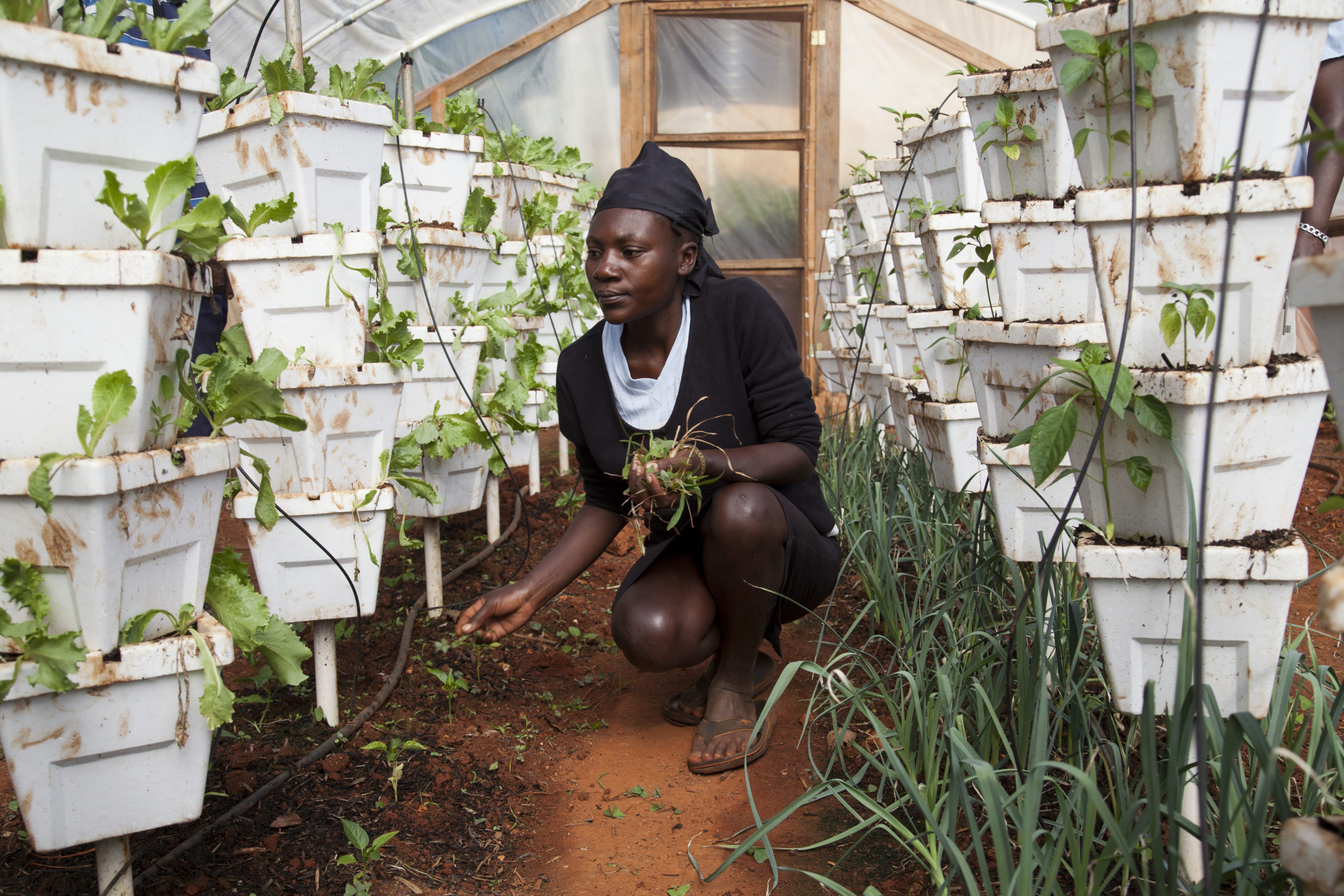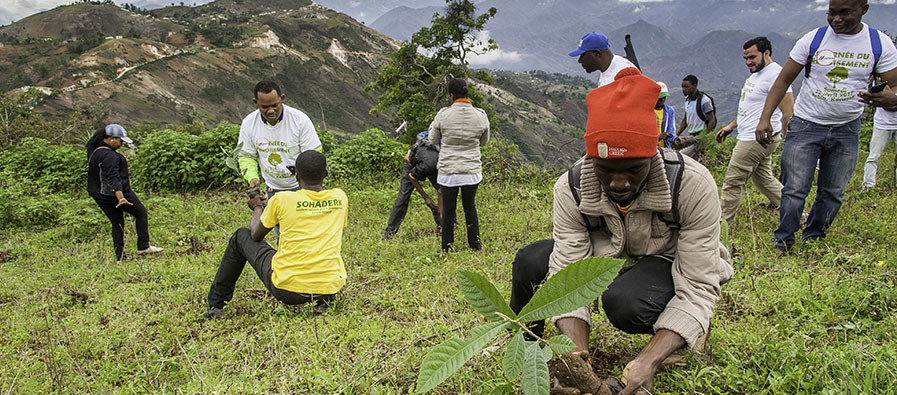Haiti is no stranger to bouts of extreme weather and changes in climate patterns, namely droughts and harsh hurricanes that threaten food security. Due to the vulnerability of much of the rural population, many trees have been cut down for charcoal, increasing susceptibility to dangerous mudslides off the mountainous terrain during heavy rains. Erosion and changes in precipitation patterns have contributed to recent flooding, which in turn destroys crops and livestock.
These experiences prove that climate change hits the poorest people the hardest. Many developing countries are especially susceptible to shocks that are increasingly likely due to rising sea levels, higher temperatures, changes in climate patterns, and more extreme weather. In addition, the majority of the world’s poor live in rural areas, and agriculture, a sector prone to cascading negative effects of climate change, is their most significant source of income.
Climate-smart agriculture (CSA) is a movement to build resilient agriculture and locally-sustainable systems to ensure food security, despite increasing climate-related shocks. It includes ecosystem and landscape management, education around climate-related risks, and adaptations in policy and practices in the wider food system. A climate-oriented mindset in agriculture can help communities practice environmentally friendly methods and build resilience among their crops and livestock to enhance long-term regional food security.
in Haiti, climate-smart agriculture techniques are being implemented to lessen the negative impacts of climate-related shocks.
The USAID-funded Haiti Chanje Lavi Plantè (CLP) program, implemented by Chemonics, is one program that strives to protect hillsides from erosion while promoting sustainable agriculture practices that increase production.
Greenhouse agriculture
Under the former USAID Feed the Future-West/Watershed Initiative for National Natural Environment Resources (WINNER) project, greenhouse agriculture was introduced to farmer organizations in hillside areas. CLP has continued supporting this initiative by providing low-cost water retention ponds, each holding up to 14,000 gallons of water. The additional water has helped farmer associations grow crops year-round in greenhouses, particularly during the dry season. The farmers use vertical drip irrigation to maximize the space while utilizing minimum water. Thanks to greenhouse agriculture, farmers can grow up to 30 times more per hectare compared to traditional agriculture on hillsides. Greenhouse agriculture provides a sustainable alternative to hillside agriculture by terracing the land and planting vegetal structures on the slopes (including vetiver, elephant grass, and pigeon peas).

Women work inside a WINNER greenhouse where they are growing lettuce and peppers.
Ravine stabilization and hillside terracing
To prevent erosion and high amounts of sediment swept downstream, CLP is working with 10 farmer organizations upstream of the Rivière Grise irrigation system in Kenscoff and Belle Fontaine to stabilize 13 ravines with gabions, dry stone walls, and biological structures, such as vetiver, to limit the amount of erosion in these hillside areas and conserve the soil. To accompany ravine stabilization efforts, farmer organizations are also finalizing the conversion of 50 hectares of terraces in Kenscoff and Belle Fontaine. By terracing slopes of less than 25 degrees, farmers can grow crops in hillside areas while protecting the slopes from erosion by using vetiver to stabilize the soil.
Agroforestry
CLP is planting 3 million tree seedlings on hillsides. The project’s approach considers the value of trees to farmers: Approximately 60 percent of the trees planted are fruit trees (breadfruit, loquat, and peach) that can be used by farmers in the future to complement their income. All the tree seedlings will be planted in strategic areas that will have the greatest likelihood of protecting the population and infrastructure built downstream from heavy sediment.
For a country like Haiti where the effects of climate change can cascade down to impact economic and food security among the rural poor, climate-smart agriculture is essential. These practices strengthen local farming institutions, revitalize deforested regions, and increase agricultural production, all with the underlying goal of improving environmental resilience in the face of climate change.



